Changing the color of hair and the shape of the hairstyle is the first step to creating a new look. Throughout life, a woman can change the shade of curls several times. These changes depend on her age, mood, chosen style and lifestyle. Natural dye, which has remained in demand for many years, is henna.
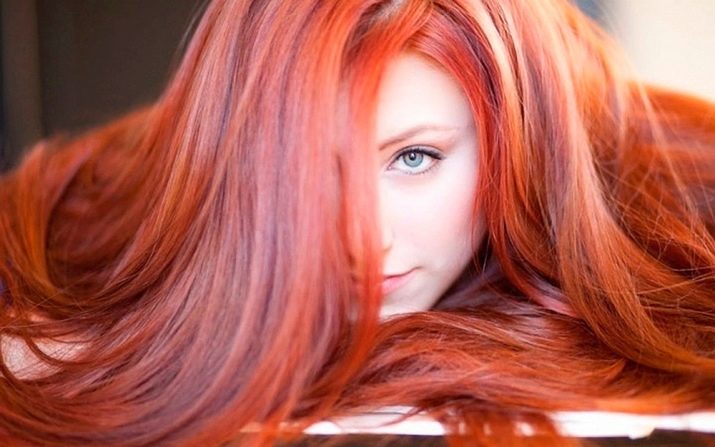
A natural preparation not only dyes hair, but also favorably affects its structure.

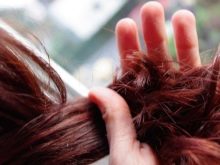

The disadvantage of this tool is the narrow color scheme.
In order to radically change the tone of curls, it is necessary to use chemicals. Before applying the selected dye to henna-treated hair, the effects of this procedure should be carefully studied.
Thoughtless actions can lead to disastrous results and the appearance of unexpected colors on the hair.
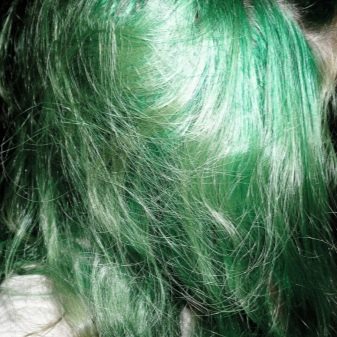
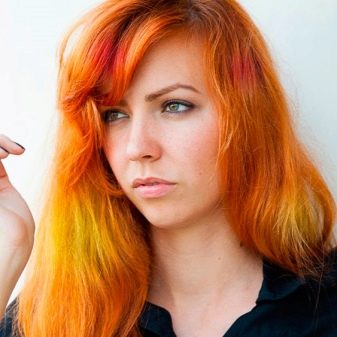
How long can I paint?
Henna is a natural coloring agent that is made from non-barbed Lawsonia. The habitat of this plant is Africa and eastern countries. Vegetable dyes are most popular among oriental women, who use them not only for coloring hair, but also for applying traditional patterns on the skin of hands and feet. The color of the underwear graphics lasts for a month, and the shade of the hair can remain bright and saturated for two months.
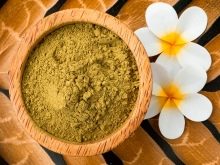


Experts recommend periodically using natural preparations from lavsonia, which will help to heal curls, give them shine and improve the structure, as well as color gray hair, activate hair follicles, and cure seborrhea.


After dyeing hair with henna, it is strictly forbidden to change the shade of hair with the help of ammonia preparations.
To improve the color scheme and give the desired shade, hairdressers are allowed to use tinted tonics and balms.
Only 3 months after applying the natural dye, you can dye your hair with dye, after consulting with a specialist and following all the procedures for removing henna. But even carrying out these manipulations in specialized salons by experienced hairdressers cannot guarantee the desired shade.


Experienced professionals recommend a styling haircut that helps to remove dyed hair. and only in the presence of natural strands to conduct a chemical change in color. The best tool for this procedure is ammonia-free paint.
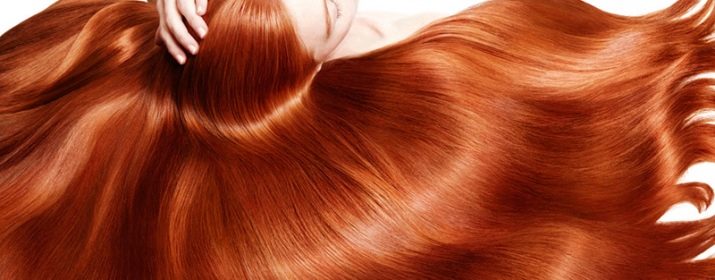
The durability of a natural material depends not only on its quality, but also on the type of hair. The greatest stability of the drug is observed on smooth and thin curls of light brown and light shade.
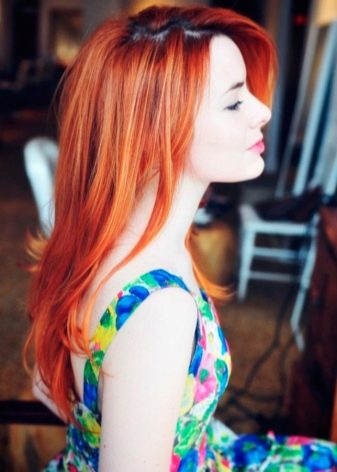
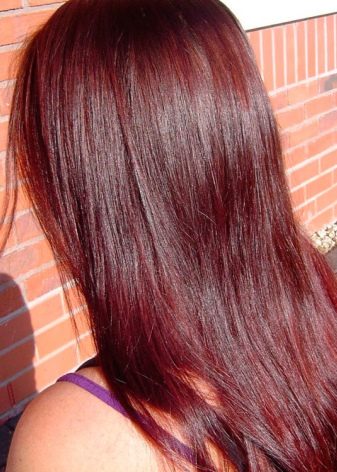
Fashionistas with red and brown curly strands will have to make a minimal amount of effort to remove the product.
Specialists recommend long-haired blondes to undergo a set of measures to bleach curls, and only then dye the strands with ordinary ammonia-free paint.
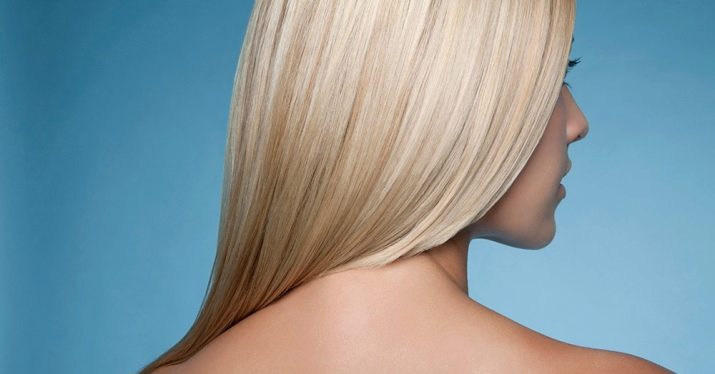
Before applying the coloring composition of henna to the hair, you must definitely look at the country of manufacture of the product. This information will make it possible to determine the stability of the composition. In modern stores you can buy two types of henna.
- Iranian - a low quality product that has a low price range and a high level of color stability. Self-removal of this tool will take a long time period.
- Indian - A high quality product that is used to improve hair. Removing this product will not cause difficulties even at home with simple drugs.
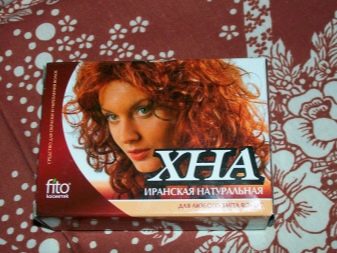
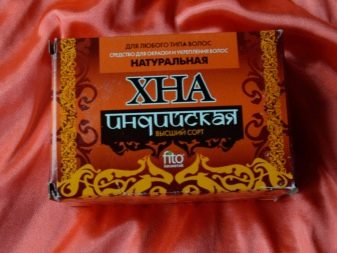
Particular attention should be paid to colorless henna, which is used to give shine and volume to the hair, as well as to protect curls from the negative effects of the environment.
The uniqueness of this composition lies in the possibility of applying any coloring agent within 30 days after use.
It is after this period of time that the protective shell breaks down on its own and there is no need to make efforts to force the removal of pigment.
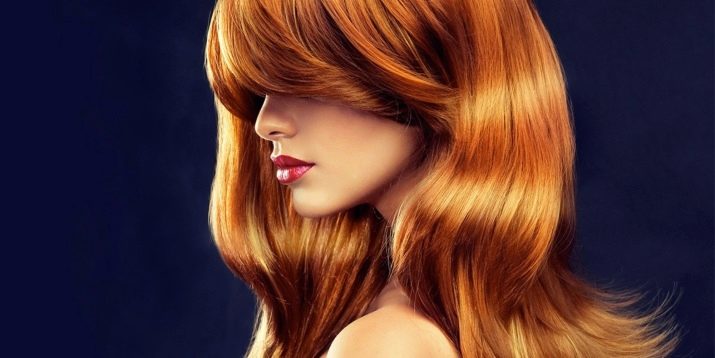
Why can not be painted immediately?
Henna-dyed hair changes not only color but also structure. The surface of the hair acquires a porous texture, and the pigment penetrates deeply into the curl and accumulates in the cuticle. The components of the coloring composition create a protective film on the strands, which increases the resistance of the color shade and makes it resistant to washing off.
Given the peculiarities of henna, experts recommend that women who several times a year radically change the shade of curls refrain from using it.
Consequences of the compound of henna and chemical dyes:
- obtaining a variety of colors - from orange to blue;
- uneven coloring of various parts of the head;
- deterioration of the structure of hair and their general condition.

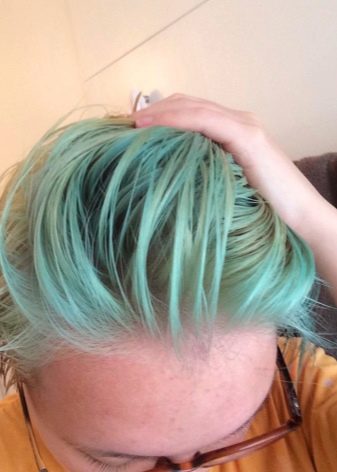
Options for color shades after staining curls treated with henna:
- lightening - purple and swamp;
- all shades of red and red - green;
- black and blueberry - uneven brown with spots of different saturation.
How to repaint?
Before dyeing curls with chemicals, be sure to remove particles of lavsonia from the hair.
Even after carrying out this complex of measures, experts categorically forbid the use of products with aggressive ammonia, which will necessarily react with the remains of henna and will provoke a distortion of the chosen shade.
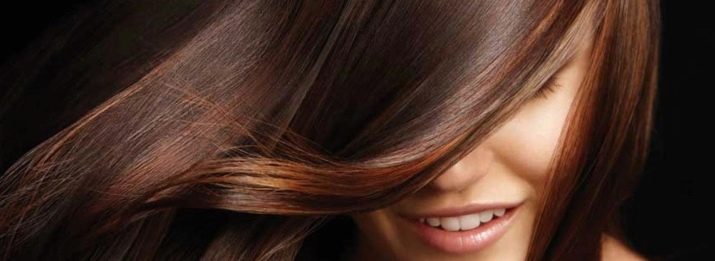
The main feature of this film membrane is its resistance to water, chemicals and ultraviolet radiation. The natural component will remain on the strands throughout the entire period of their growth, and the natural shade of hair will appear only on newly regrown hair.
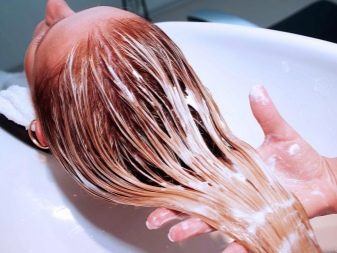

Professional masters recommend visiting a beauty salon before painting and performing the decapitation procedure, the essence of which is to displace natural pigments with special chemical compounds. Workers in beauty salons give a 100% guarantee of the effectiveness of this procedure. If it is not possible to carry out decapitation, experts recommend using alternative methods of removing henna before painting.
Recommendations for the removal of a natural drug at home:
- coating curls with an alcohol solution;
- applying washing composition to unwashed strands;
- warming the head with a plastic bag and a terry towel;
- additional heating of the hair with a hairdryer;
- removal of cosmetic composition with a special shampoo and a large amount of water.
A cosmetic product that can help remove coloring pigment can be purchased ready-made or made independently.
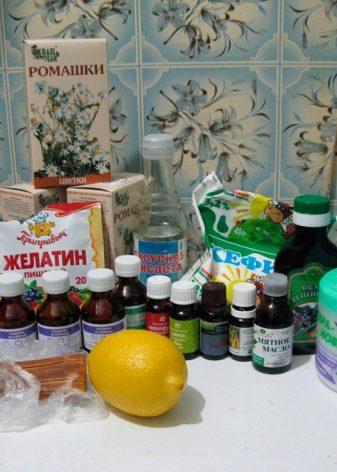

The procedure for using the oil composition consists of the following measures:
- choice of oil base;
- oil heating in a water bath;
- uniform distribution of the product along the entire length;
- keeping a certain amount of time;
- removal of the composition with a special shampoo;
- rinsing curls with acidified water at room temperature.
After carrying out all the above preparatory measures, you can begin to dye your hair.
The best result will be given by chestnut, red, brown and black paints. Get the desired shade obtained after a single application.
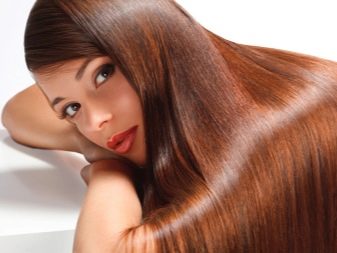

In order to be repainted in a blonde, light brown or light tone, it is necessary to apply the drug several times on the hair. The first coloring will have a tinting effect, and all subsequent steps will improve the color cast.
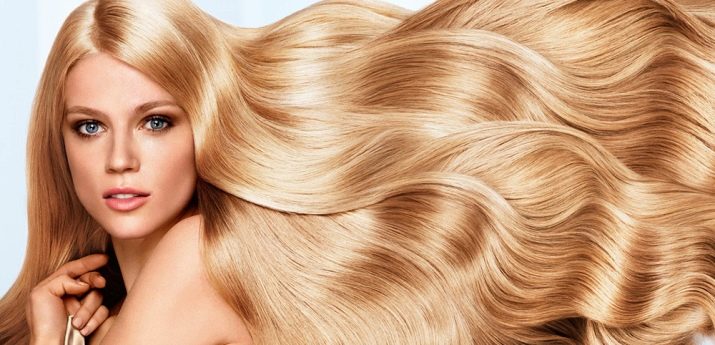
In order not to damage the hair structure by multiple coloring, it is necessary to use only ammonia-free products.
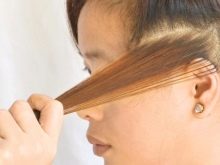
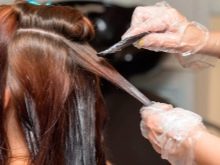

A mandatory measure before applying paint to all curls is to conduct trial testing, the task of which is to determine the final result of dyeing and the absence of an allergic reaction to the product in a small area of hair.


Ignoring this procedure can not only lead to negative consequences of applying a chemical agent, but also to damage the hair structure and the appearance of allergic rashes and redness.
Tips
In the collections of tips for skin and hair care, you can find a huge number of recipes that will help prepare the wash formulations. These products will not only remove the paint, but also help to heal and moisturize the hair.
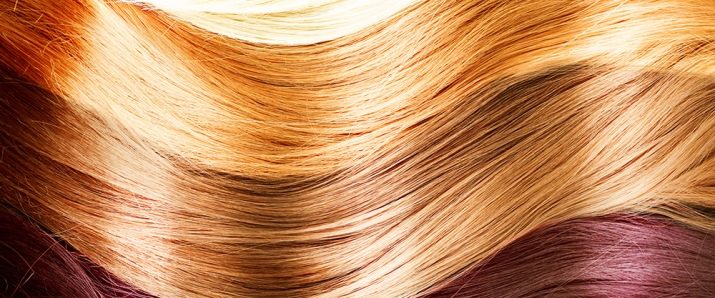
The choice of the oil base of the drug depends on the type of hair:
- healthy curls - coconut, olive, sunflower, almond, soy, shea, walnut, sesame;
- dry locks - olive, sunflower, camellia, sesame, soy, coconut, walnut, hemp, grape;
- weakened hair - burdock, sesame, coconut, murmur, soy, shea.
Means containing the above oils will help quickly and effectively remove the pigment of lavsonia.
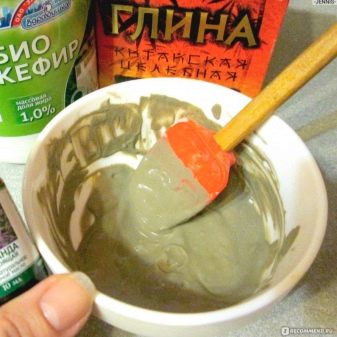
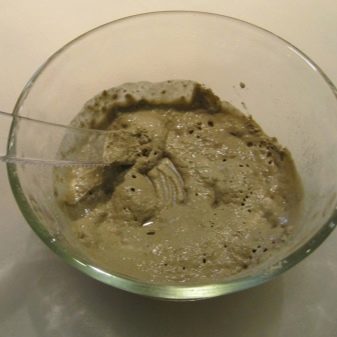
Clay and kefir will help discolor greasy curls. Women with normal hair should give preference to a mask of eggs and cognac, and for dry strands you need to choose the composition of vegetable oils.
Specialists advise you to pay attention to the kefir mask, which contains baker's yeast.
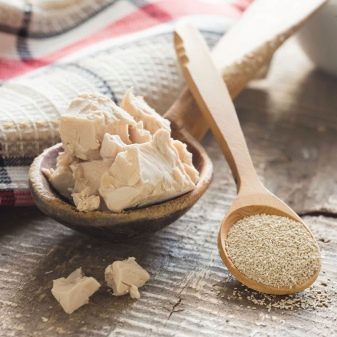

To prepare it, you need to heat one glass of kefir and add 45 grams of ordinary dry yeast to it. After the appearance of fermentation, the composition must be applied to dirty hair and left for at least 90 minutes. You can wash off the product with shampoo and plenty of water.
Onion mask is a universal remedy that helps to wash off the paint and at the same time strengthens the hair follicles. An onion preparation is prepared from several onion heads by squeezing juice out of them. The resulting juice should be evenly distributed over the head and left for several hours.To remove the unpleasant odor, you can rinse the curls with water and lemon juice.
A simple and effective way to remove paint is to rinse your hair in water with vinegar for 20 minutes.
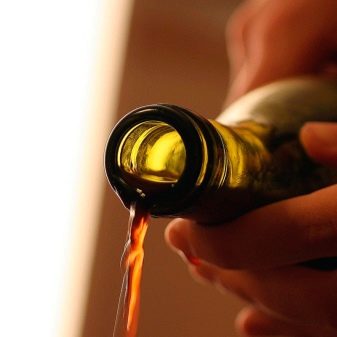
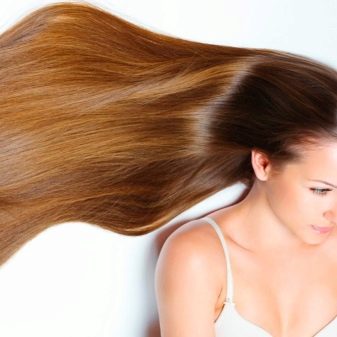
Hairdressers recommend that you do not use expensive shampoos to wash your hair after the mask, but ordinary household soap, whose alkaline composition will accelerate the washing of henna.
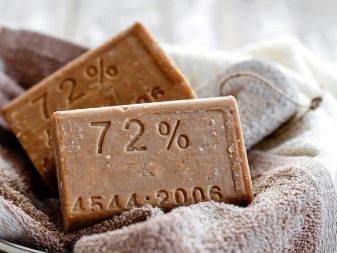
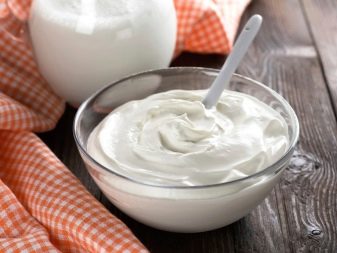
An essential ingredient for any mask will be egg yolk, mustard powder and honey. Sour cream will help remove saturated colors.
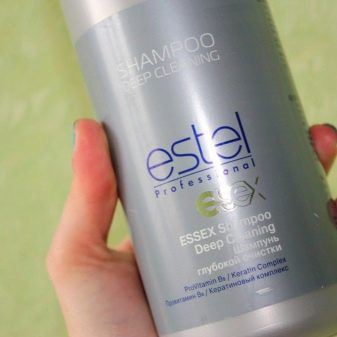
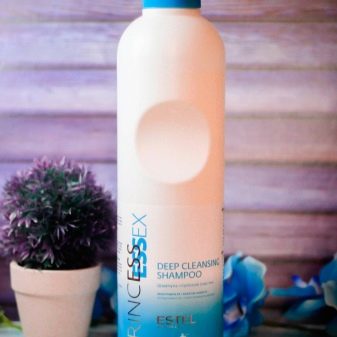
General advice from specialists regarding the procedure for removing pigment color:
- use only shampoos with the effect of deep cleansing;
- regular use of rinse aid based on chamomile broth and with the addition of vinegar or lemon juice;
- pigment removal after a short period of time after staining significantly increases the chance of its complete removal;
- regular use of nourishing and moisturizing masks that will improve the dried structure of curls after decapitation;
- mandatory testing of a new tool before applying it to all parts of the head;
- Use only certified cosmetics and formulations.
Creating a new image is a crucial moment in the life of every woman. Her mood, and sometimes a positive outcome of romantic and business relationships, depends on the result.

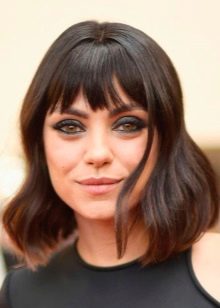
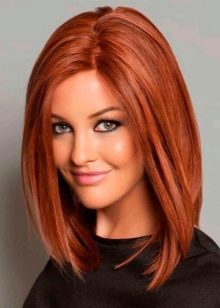
Before deciding to change the color scheme of the strands, it is necessary to consult an experienced hairdresser who will help you find the right solution.
The opinion that the use of natural dyes cannot cause negative consequences is erroneous. Even a popular remedy like henna can create problems with subsequent changes in hair color. Only a competent approach to changing your appearance and choosing a tool will be the key to creating a vivid image that will certainly help in solving the most difficult tasks.
For hair coloring in blond after henna, see the video below.










